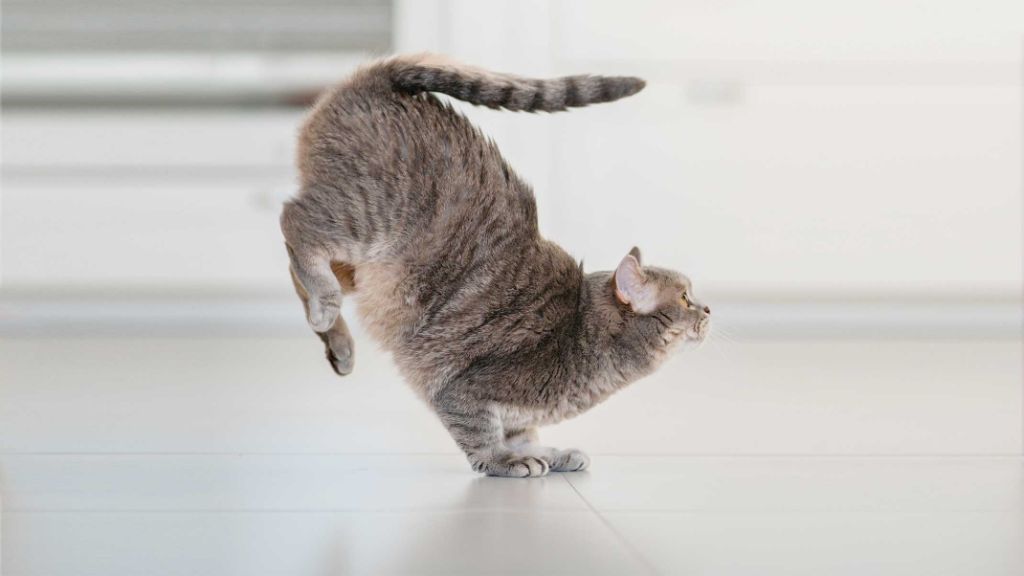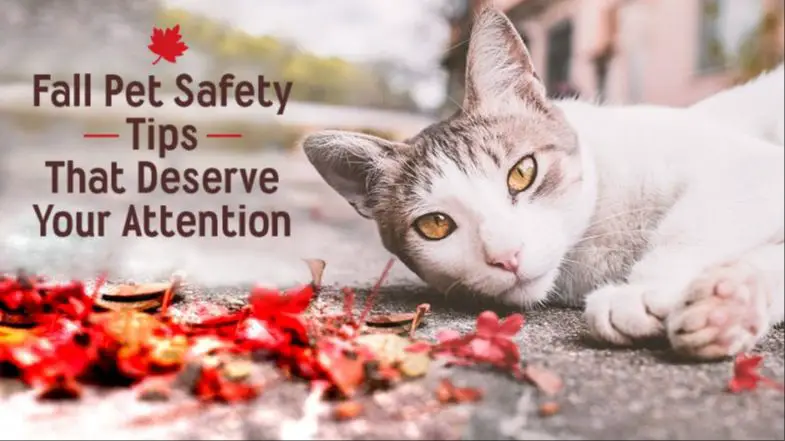Cats are well-known for their remarkable ability to land on their feet when they fall. In fact, there’s even an old saying that “cats always land on their feet.” But is this really true? Can cats always manage to right themselves in mid-air and stick the landing, no matter the circumstances?
The reality is that while cats do have an impressive ability to twist their bodies and maneuver in the air in order to land upright, they cannot always land on their feet. Factors like the height of the fall, whether they can prepare and get into the right landing position, and even the cat’s age and health can affect whether they manage to land on their feet or not.
In this article, we’ll take a detailed look at cats’ special “righting reflex” that allows them to often land on their feet. We’ll also explore the factors that can impact whether they actually manage to do so in real-world falls. Additionally, we’ll provide tips to prevent injurious falls in cats and what to do if your cat does suffer a falling injury.
Explaining The Righting Reflex

Cats have an innate ability called the righting reflex that allows them to orient themselves and land on their feet when falling. This reflex is controlled by cats’ unique vestibular system and special inner ear canal design. The vestibular system includes the inner ear canal, which contains fluid and fine hairs that detect the cat’s motion and head position. When the cat begins to fall, the movement and gravity cause the fluid in the canals to shift, which the hairs then detect and send signals to the brain about the cat’s orientation (1).
Cats have a long, narrow inner ear canal design that makes them very sensitive to even subtle shifts in head motion and gravitational pulls (2). As the brain receives signals about the cat’s position mid-fall, it quickly calculates the necessary muscle adjustments to rotate the cat’s head and body so that its feet are downward. This rapid vestibular signaling and processing allows cats to reorient themselves very quickly, fast enough to land upright even from short falls. So in most cases, cats are able to right themselves using this built-in reflex.
Sources:
(1) https://en.wikipedia.org/wiki/Cat_righting_reflex
(2) https://www.fearfreehappyhomes.com/feline-physics-how-the-righting-reflex-helps-cats-stick-a-landing/
Factors That Impact Cats’ Ability To Land On Their Feet

Several factors can affect a cat’s ability to right itself and land on its feet, including the height of the fall, the cat’s age and health, and its awareness and preparedness for the fall.
The height of the fall is a major factor. According to https://www.clubscientific.com/blog/general/why-do-cats-always-land-on-their-feet/, cats only have time to orient themselves properly during short falls. From higher heights, they may not have time to right themselves before impact.
A cat’s age and health also play a role. Older cats or cats with disabilities, injuries, or illnesses may not have the agility and reflexes needed to consistently land on their feet. Kittens also have poorer coordination and ability to orient themselves https://conservationcubclub.com/cat-righting-reflex-cats-land-on-their-feet/.
Cats that are startled or unaware of the impending fall are less likely to land upright. However, cats that see the fall coming and have time to prepare can optimize their chances of landing on their feet.
Evidence That Cats Don’t Always Land On Their Feet
Despite cats’ remarkable ability to right themselves in mid-air and land on their feet, there are many anecdotal reports of cats falling incorrectly and being injured or killed. On online forums like Reddit, cat owners have shared stories of seeing their cats fall from heights like balconies, windows, or trees and land on their heads, backs or sides.

For example, one Reddit user described witnessing their cat fall 22 stories from a high-rise building [1]. They reported the cat landed on the pavement on its side and was killed instantly. However, soon after, the cat reappeared unharmed in their apartment, as if nothing had happened. While this particular story involves an unexplained phenomenon, it demonstrates that sometimes cats do not land correctly when falling from extreme heights.
These anecdotal reports indicate that while cats’ righting reflexes enable them to land upright most of the time, it does not work 100% of the time. Factors like old age, obesity, or disabilities may prevent some cats from twisting their bodies properly to land on their feet.
Studies On Cat Falling
Scientific studies have examined the physics and biology behind cats’ ability to land on their feet when falling. In a 2022 article in The Atlantic, researchers found that cats’ aerial acrobatics rely on what’s called the “righting reflex” – a cat’s innate ability to twist its flexible spine mid-air and extend its limbs to stabilize itself and land upright (Source). This reflex engages when cats sense they are falling, allowing them to orient themselves feet-down.
While cats’ righting reflexes are impressive, studies show they do still face risks from falls depending on factors like height. According to a 1987 study, cats had a 90% rate of survival from falls around 5-9 stories, but had more injuries from shorter 1-2 story falls since they didn’t have time to right themselves (Source). Researchers found the righting reflex works best for falls around 60-90 feet. However, very high falls over 9 stories still posed severe risks for cats.
Overall, scientific research indicates cats can skillfully land on their feet from falls when given sufficient height, but are not immune to injury, especially from short, unexpected falls. Their righting reflex helps mitigate risk, but does not guarantee cats can survive any fall unharmed.
Height And Injury Risk
The height at which a cat can suffer injuries from a fall depends on a variety of factors. In general, cats have a remarkable ability to survive falls from great heights.
According to studies, cats can generally survive falls from up to 7 stories without serious injuries. However, the exact height at which injuries occur depends on:
- The cat’s body weight – heavier cats hit the ground with greater impact
- The cat’s flexibility – stiffer, less agile cats are more prone to injuries
- How the cat lands – landing feet-first allows for better shock absorption
- The landing surface – soft surfaces like grass are safer than hard surfaces
While cats have high survival rates from falls up to 7 stories, injuries can still occur from shorter falls. Falls from just 2-3 stories can result in bruising, fractured bones, ruptured organs, and other trauma. At certain heights, falls become fatal – studies show mortality rates approach 100% at falls beyond 10 stories.
To prevent injurious and potentially fatal falls, cat owners should take precautions against unintentional windows and balcony falls by installing screens, nets, or other barriers.
Preventing Injurious Falls

There are several steps cat owners can take to help prevent dangerous falls that could injure their feline companions:
Install screens on windows and ensure they are securely fastened. Screens can help prevent cats from falling out of open windows. Make sure any pet doors or flaps are securely attached as well.1
Keep cats away from unsafe ledges and railings. Use deterrents like tin foil or double-sided tape on surfaces you don’t want cats jumping onto. You can also place plants or other decorative items to block access.
Provide stable cat trees and towers for climbing and perching. Make sure they are anchored properly and placed away from windows or ledges. Add sisal scratching posts to encourage use.
Keep balconies enclosed or install netting along the sides and top. This prevents access to balcony railings. Make sure the netting is secure and not damaged.2
Consider a high-rise harness and leash for any outdoor access, which will allow exploration while preventing any potential falls.
Keep cats indoors whenever possible. Supervise or restrict access to potentially dangerous areas like balconies, open windows, fire escapes, etc.
First Aid For Falling Injuries
If your cat suffers an injury from a fall, it’s important to administer first aid while you assess whether veterinary care is needed. Some things you can do at home to help an injured cat include:
- Check your cat’s vital signs – make sure they are breathing and their heart is beating normally.
- Look for signs of shock like pale gums, shivering, weakness or unresponsiveness. Keep them warm with a blanket. (source)
- Gently check for obvious wounds, bleeding, fractures or other injuries. Apply gentle pressure to stop bleeding.
- Do not try to splint or bandage fractures at home as this could cause more harm. (source)
- For limping or swelling from sprains/bruises, apply ice packs wrapped in cloth for 15 minutes at a time. (source)
- Carefully place your cat on a rigid surface to transport them, supporting any injured areas.
- Monitor the cat closely and contact your vet right away. Urgent care may be needed.
When To Seek Veterinary Care
If your cat experiences a hard fall from a significant height, it’s important to monitor them closely for signs of injury or distress that require medical attention. According to VCA Animal Hospitals, you should seek emergency veterinary care if your cat displays any of the following symptoms after a fall:
- Unconsciousness or semi-consciousness
- Inability to stand or walk
- Difficulty breathing or panting
- Vomiting or retching
- Crying or whining in pain
- Bleeding from the nose or mouth
- Dilated pupils
- Pale gums
Additionally, WagWalking.com states that immediate veterinary care should be sought if your cat shows signs of weakness, unsteadiness, anxiety, diarrhea, or collapse after a fall. Even if your cat seems normal initially, it’s best to monitor them closely over the next several days for any emerging symptoms of internal injuries. Falls can sometimes cause delayed effects.
According to Anicira.org, straining to urinate or during labor are also red flag symptoms requiring prompt veterinary attention after a cat has fallen or suffered trauma. Don’t wait to see if symptoms improve on their own – it’s better to have your vet thoroughly evaluate your cat after any substantial fall.
Conclusion
In conclusion, while cats do have an amazing ability to right themselves in mid-air and land on their feet thanks to their flexible spine and “righting reflex,” studies and anecdotal evidence show they do not always land upright. Cats can be injured from falls, with risk increasing proportionally to height of the fall. Minor falls are less concerning, but falls from higher than two stories can lead to severe injuries and require immediate veterinary care. Key factors that impact a cat’s ability to land on its feet include age/health status, if they can prepare for landing, and distance fallen. Though cats are remarkably adept jumpers and fallers, owners should take precautions to protect cats from injurious high falls.

